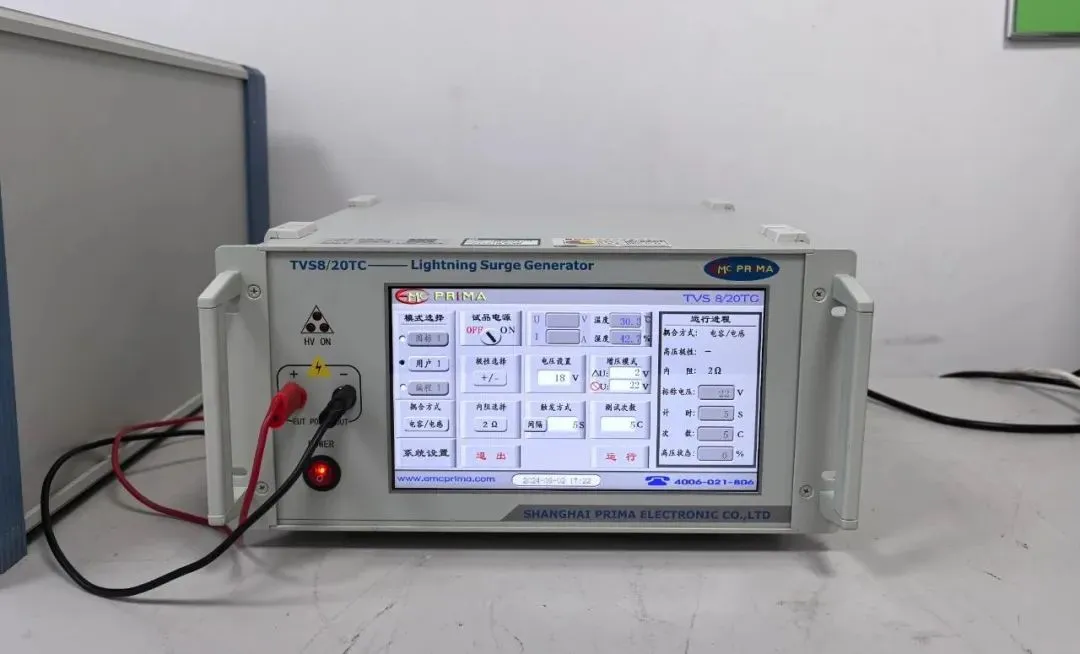
How to get Germany GS Certification?
What is the GS Certificate?
GSstands for “Geprüfte Sicherheit”in German, meaning “Tested Safety”, and also interpreted as “Germany Safety”. The gs certification is a voluntary safety certificationbased on the German Product Safety Act (ProdSG), tested in accordance with European (EN) or German (DIN) standards. It is a widely recognized safety certification mark in the European market.
gs mark
1. GS Markis a safety certification issued by organizations such as TÜV, VDE, etc., which are authorized by the German Ministry of Labor.
The GS mark is widely accepted by consumers across Europe. Products with GS certification are typically sold at higher prices and have better market performance.
2. According to the EU CE directives, since January 1, 1997, the “low voltage directive (LVD)” has been enforced.
GS certification fULly covers all LVD requirements. Therefore, once a product receives the GS mark, TÜV will also issue the LVD ce certificate of Conformity (CoC)free of charge.
Since 1997, GS certificates issued by TÜV Rheinland and TÜV SÜD have included the lvd certificate as part of the GS certification.
3. Requirements for GS Certification– Products and Documentation:
① The product must pass type testingin accordance with European safety standards.
② The product's structuremust meet standard requirements.
③ The manual(in German and English) must comply with standards.
④ Technical documents such as structure diagrams, circuit diagrams, and component lists(in English) must be prepaRED as per TÜV requirements. Product testing is based on these specifications.
4. Factory Quality System Requirements and Annual Inspections:
① The factory must establish a quality assurance systembased on the ISO 9000series when producing in batches.
② The factory must at least have its own quality management procedures, quality records, and sufficient manufacturing and testing capabilities.
③ A new factory must be auditedand approved before a GS certificate is issued.
④ After certification, the factory must be audited at least once a year, regardless of how many products have received the GS mark. Only one factory auditis required for multiple product certifications.
Certification Bodies
1. German Certification Bodies:
Well-known institutions in China that are recognized to issue GS certificates directly by Germany include:
① TÜV Rheinland
② TÜV SÜD (TÜV Product Services)
③ VDE
2. Other European Certification Bodies:
Organizations cooperating with Germany to issue GS certificates include:
① Eurofins (Italy)
② IMQ (Italy)
③ SGS
④ ITS
Product Scope for GS Certification
1. Household appliances (e.g., refrigerators, washing machines, kitchen equipment)
2. Home-use machinery
3. Sports and recreational equipment
4. Consumer electronics (e.g., audio-visual devices)
5. Office electrical and electronic equipment (e.g., copiers, fax machines, shredders, computers, printers)
6. Industrial machinery and laboratory testing equipment
7. Other safety-related products (e.g., bicycles, helmets, ladders, furniture)
Introduction to GS Certification
The GS markindicates that a product has passed independent third-party safety testing.
Although not legally mandatory, it provides manufacturers with legal protectionunder strict German (European) product safety lawsin case of product-related accidents.
Thus, the GS mark is a powerful marketing toolthat builds consumer trust and boosts purchasing intention.
Though it is based on German standards, most European countries recognize the GS certification.
Unlike ce marking, which is a self-declaration, GS certification is issued by qualified third-party testing bodies, making it more authoritativeand crediblein consumers' eyes.
Who Can Issue GS Certificates?
1. German Certification Bodies:
① TÜV Rheinland
② TÜV Product Services (TÜV SÜD)
③ VDE
2. Other European Certification Bodies:
① KEMA
② ITS
③ NEMKO
④ DEMKO
GS Certification Process
1. Initial Meeting:
Certification bodies or agents explain the procedures, relevant standards, and provide application forms.
2. Application:
Applicants submit documents such as assembly drawings, electrical schematics, bill of materials, user manuals, and explanations for model differences.
3. Technical Meeting:
After reviewing documents, the certification body arranges a technical meeting with the applicant’s engineers.
4. Sample Testing:
Testing is conducted based on applicable standards, either at the manufacturer’s lab or an accredited third-party lab.
5. Factory Inspection:
On-site inspection of production facilities focusing on safety procedures is mandatory.
6. GS Certificate Issuance
Certification Requirements
1. Quality Management
① Independent quality department with named responsible person
② Staff training programs, particularly for key operations
③ Quality personnel-to-production staff ratio
④ Records for key processes and traceable product packaging
⑤ Raw material, in-process, and finished product inspections
⑥ Quality review system, including periodic quality meetings
2. Production Line for Certified Product
① Flowcharts and quality control points
② Equipment maintenance and inspection records
③ Key process/equipment listings with accuracy levels
3. Materials and Components
① Lists of critical components/materials
② Quality control measures and inspection specifications
③ Storage and retrieval system
4. Calibration and Metrology
① Metrology department or external services
② Personnel qualifications and scope of work
5. In-House Testing Capabilities
① Test equipment with certificates and capability listings
② Appropriate testing environment
6. Technical Documentation
① Technical drawings, process documents
② Test reports within the last 6 months
③ Waste/reject rates
7. Technical Support and Service
Customer feedback and complaint handling records
Required Documentation
1. Completed application form
2. Signed general agreement
3. Safety evaluation materials:
① cb certificate and report(including EU group differences), or other safety documentation
② User manual(with safety warnings, maintenance, accessory installation instructions)
③ Component list(with manufacturer info, model numbers, certifications)
④ Circuit diagram and layout
⑤ Product structure diagram
⑥ Transformer specifications
4. Food contact safety documentation(if applicable)
5. Nameplatewith correct-sized GS logo in German
6. EMC assessment reportand Declaration of Conformity (DoC)
7. German-language manual
8. Production samplefor structural/type/ergonomic evaluation
9. Noise and EN 50332 reports(if applicable)
10. DMF, EMF evaluation reports(if applicable)
Timeframe
Typically, 6–8 weeks, depending on whether product modifications are needed and how quickly documentation is provided.
Function of the GS Mark
1. Signifies product safety approved by a trusted third party
2. Enhances manufacturer liability protectionunder German/EU laws
3. Increases consumer confidence and sales potential
4. Not legally required, but widely respected across Europe
5. Often meets CE requirements simultaneously
6. Especially beneficial for safety-conscious markets
Advantages of GS Certification
1. Recognized by consumers in Germany and across the EUas a safety and quality mark
2. Minimizes legal liabilityrelated to product safety
3. Boosts confidence in product quality and legal compliance
4. Emphasizes manufacturer responsibility for safety
5. Assures users that the product passed independent testing
6. Often exceeds legal safety requirements
7. More respected than CE marking, since it's issued by accredited third parties
Relationship Between GS and CE
1. The EU CE directive, effective from January 1, 1997, regulates the Low Voltage Directive (LVD).
2. GS certification already includes all LVD requirements.
3. Therefore, obtaining the GS markalso entitles the manufacturer to a free LVD CE certificate(CoC).
4. TÜV SÜD and TÜV Rheinland include the LVD certificate within the GS certificate since 1997.
Email:hello@jjrlab.com
Write your message here and send it to us
 Do I Need EC Homologation in the USA?
Do I Need EC Homologation in the USA?
 FCC Part 15B & Part 97 Certified
FCC Part 15B & Part 97 Certified
 EMC Pre-Compliance Testing UK
EMC Pre-Compliance Testing UK
 EMC Compliance Testing Australia
EMC Compliance Testing Australia
 Electrical Compliance Testing NZ
Electrical Compliance Testing NZ
 Compliance Testing for Children's Clothing
Compliance Testing for Children's Clothing
 Amazon Product Compliance Testing
Amazon Product Compliance Testing
 What is RCM Compliance Testing?
What is RCM Compliance Testing?
Leave us a message
24-hour online customer service at any time to respond, so that you worry!




